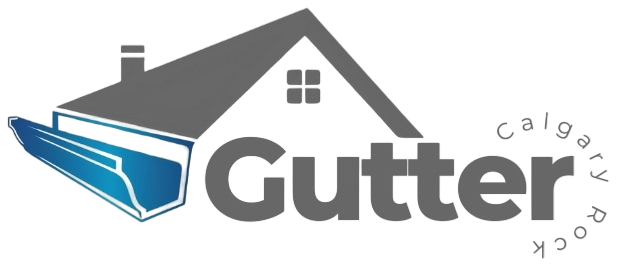Maintaining your home’s eavestroughs (or gutters) is crucial to preventing water damage. Eavestroughs are designed to channel rainwater away from your home’s foundation, walls, and roof.
If neglected, clogged eavestroughs can lead to serious issues like water damage, mold growth, and even structural problems.
So, how often should you clean your eavestroughs? This article will provide you with a detailed guide.

How Often Should You Clean Your Eavestrough?
Most experts recommend cleaning your eavestroughs at least twice a year, typically in the spring and fall. However, this general guideline can vary depending on your climate and the amount of vegetation around your home.
Spring: Cleaning in the spring helps remove debris that accumulated over the winter.
Fall: Cleaning in the fall clears out leaves and other debris before winter sets in.
Factors That Influence Cleaning Frequency
Several factors can influence how often you should clean your eavestroughs. Understanding these factors can help you determine the best cleaning schedule for your home.
1. Climate
The climate in which you live can greatly affect how often you need to clean your eavestroughs. In areas with heavy rainfall, frequent storms, or significant snowfall, you might need to clean your eavestroughs more often. For example:
- Rainy climates: Frequent rain can wash debris into your eavestroughs, requiring more frequent cleaning.
- Snowy climates: Melting snow can bring debris and ice into your eavestroughs, increasing the need for cleaning.
2. Surrounding Vegetation
The amount of vegetation around your home is another key factor. Homes surrounded by trees are more likely to have eavestroughs filled with leaves, twigs, and other debris, necessitating more frequent cleaning. For example:
- Lots of trees: If you have many trees close to your home, especially those that shed leaves or needles, you’ll need to clean your eavestroughs more often.
- Minimal vegetation: Homes with fewer trees and less vegetation may not require cleaning as frequently.
3. Previous Cleaning Schedule
The condition of your eavestroughs after the last cleaning can also influence how soon you need to clean them again. If your eavestroughs were heavily clogged the last time you cleaned them, you might need to increase the frequency of cleaning to prevent buildup.
For instance:
Heavily clogged: If you found a lot of debris during the last cleaning, consider checking and cleaning your eavestroughs more frequently.
Light debris: If there was minimal debris, you might stick to the twice-yearly schedule.
Signs That Your Eavestrough Needs Cleaning
Even with a regular cleaning schedule, it’s important to watch for signs that your eavestroughs need immediate attention. Here are some common indicators:
Overflowing water: If water spills over the sides of the eavestrough during rain, it’s a sign of a blockage.
Visible debris: Leaves, twigs, and other debris protruding from the eavestrough are clear signs it needs cleaning.
Sagging eavestroughs: Excess weight from debris and water can cause eavestroughs to sag or pull away from the house.
Staining on siding: Water stains or streaks on your home’s exterior can indicate overflowing eavestroughs.
Plants growing in eavestroughs: If you see plants growing in your eavestroughs, it’s definitely time for a cleaning.
Benefits of Regular Eavestrough Cleaning
Regular eavestrough cleaning offers numerous benefits that help maintain the integrity of your home:
Prevent water damage: Clean eavestroughs effectively channel water away from your home, preventing water damage to the roof, walls, and foundation.
Avoid pest infestations: Debris-filled eavestroughs can attract pests like birds, insects, and rodents. Regular cleaning keeps them at bay.
Prolong eavestrough life: Removing debris reduces the risk of rust, corrosion, and damage, extending the life of your eavestrough system.
Maintain home appearance: Clean eavestroughs prevent unsightly overflow stains and keep your home looking well-maintained.
How to Clean Your Eavestrough
Cleaning your eavestroughs is a task you can do yourself with the right tools and safety precautions. Here’s a brief outline of the steps involved:
- Safety first: Use a sturdy ladder and wear gloves to protect your hands from sharp debris.
- Remove debris: Start by scooping out leaves, twigs, and other debris with a gutter scoop or your hands.
- Flush with water: Use a garden hose to flush out any remaining dirt and check for proper water flow.
- Check for damage: Inspect your eavestroughs for any signs of damage or leaks and repair as needed.
- Install gutter guards: Consider adding gutter guards to reduce the frequency of cleaning by preventing debris buildup.
Conclusion
Regular eavestrough cleaning is essential for maintaining your home and preventing costly water damage.
While most experts recommend cleaning your eavestroughs at least twice a year, factors like climate, surrounding vegetation, and the condition of your eavestroughs can influence how often you need to clean them.
By watching for signs that your eavestroughs need attention and understanding the benefits of regular maintenance, you can keep your home in top shape.
Prioritize eavestrough cleaning to protect your home and ensure it remains a safe and comfortable place for you and your family.
